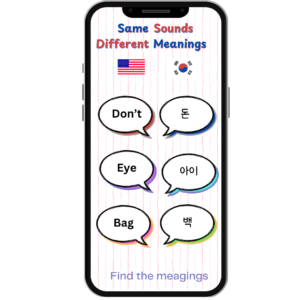The COVID-19 pandemic normalized mask-wearing worldwide, but in the U.S., there was notable resistance. This reluctance stemmed from a cultural mindset: “If you’re sick, just stay home. Why wear a mask?” In the U.S., schools and workplaces often encourage going home at the first sign of illness.
In contrast, Korea embraced masks long before the pandemic. Whether for colds or fine dust, masks have been an everyday essential for decades, even during hot summers. They are more than health tools—they reflect deeper cultural values. Let’s explore how masks in Korea and sunglasses in the U.S. reveal the differences in communication and daily life.
Masks in Korea, Sunglasses in the U.S.
In Korea, masks are everyday items for protection and anonymity. Fine dust pollution, a common concern, makes mask-wearing a frequent and socially accepted practice.
In the U.S., sunglasses serve a similar role as daily essentials, especially in regions with intense sunlight. The strong UV rays, combined with the light sensitivity common among Caucasians, have made sunglasses indispensable.
Emotional Expression: Masks vs. Sunglasses
Masks and sunglasses are more than accessories—they influence how emotions are displayed and perceived.
Masks in Korea: Emotional Moderation
Masks hide the mouth, reducing visible emotional expressions like smiling. This fits with Korea’s collectivist culture, where harmony and emotional restraint are valued. Masks also prevent miscommunication by concealing expressions during tense conversations, minimizing potential conflicts.
Sunglasses in the U.S.: Emotional Protection
Sunglasses block eye contact, offering emotional privacy. This aligns with the individualistic nature of American culture, where personal emotions are closely guarded. For example, poker players often wear sunglasses to hide their reactions and maintain a competitive edge.
Psychological Insights: Smiles vs. Fear
Research by psychologist Paul Ekman shows how emotions are expressed differently:
- Smiles are revealed through the mouth muscles (zygomaticus major).
- Fear is displayed in the eyes, through pupil dilation and surrounding muscles.
In Korea, masks primarily conceal smiles, reflecting a focus on emotional restraint. In the U.S., sunglasses hide the eyes, protecting individuals from revealing vulnerability.
Broader Cultural Context with Examples
The differences in mask and sunglass usage highlight contrasting cultural communication styles deeply rooted in Korean and American societies.
Korea: Eye-Centered Communication
In Korea, emotions are often conveyed through the eyes. This reflects the collectivist nature of Korean culture, where people strive to maintain harmony by reading subtle cues from one another.
- “눈치” (Nunchi): This term refers to the ability to read the room or pick up on unspoken social cues. For example, in a group setting, someone with good “nunchi” might notice when a conversation topic makes others uncomfortable and shift the topic accordingly.
- “눈빛만 봐도 안다” (We know just by looking at the eyes): This phrase emphasizes how Koreans rely on eye contact to understand others. For instance, in family settings, parents might communicate disapproval or encouragement with just a glance.
In hierarchical or formal situations, eye contact can also convey respect or deference. For example, in traditional settings like bowing, individuals may avoid direct eye contact with superiors to show humility.
U.S.: Verbal-Centered Communication
In the U.S., emotions and intentions are more openly expressed through words rather than non-verbal cues. Speech is a cornerstone of communication, often viewed as a measure of trustworthiness and openness.
- Directness in Conversation: Americans often value clear and explicit verbal communication. For instance, in business meetings, it’s common for people to express their opinions openly, even if it contradicts others. Silence might be interpreted as disinterest or disagreement.
- Active Listening: While verbal expression is prioritized, Americans also emphasize demonstrating attentiveness by responding verbally, such as saying, “I see,” or “That makes sense.” These affirmations help maintain engagement in conversations.
- “Say it with a Smile”: In the U.S., smiles are a key part of verbal communication, often used to build rapport. For example, a service worker greeting customers with a smile conveys friendliness and approachability, even if they’re under stress.
These examples highlight the focus on spoken interaction in the U.S., where clarity and verbal affirmations take precedence over subtle cues.

Conclusion: What Masks and Sunglasses Reveal
The way masks and sunglasses are used reflects deeper societal values. In Korea, the eyes are the focus of communication, while in the U.S., the mouth plays a central role.
Understanding these cultural differences enriches our appreciation of how each society navigates emotions and interactions. Masks and sunglasses, though simple objects, symbolize the diverse ways people protect, express, and connect with one another.








